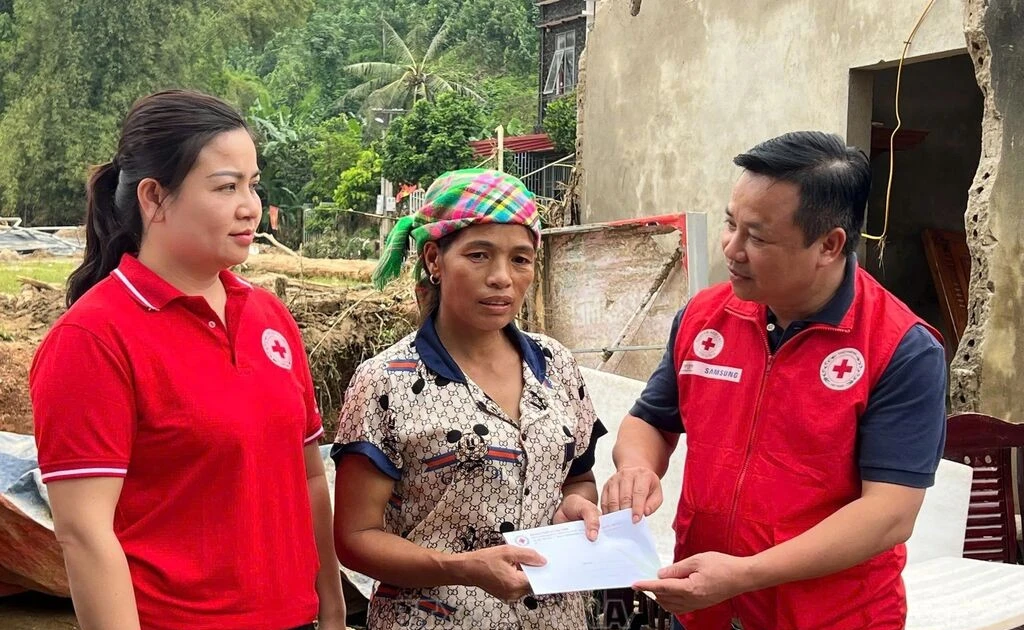According to statistics from the Ministry of Health, the current health insurance coverage is about 92.03% of the population. But the sustainable development and mobilisation of the remaining 8% of the population participating in health insurance are posing challenges.
Coverage rate increased but not stable
Tran Thi Trang, Acting Head of the Legal Affairs Department under the Ministry of Health, said: After 31 years of implementing health insurance policies, Vietnam has become one of the leading countries in the proportion of people participating in public health insurance, in Asia. As of December 2022, the whole country has over 91,067 million people participating in health insurance, reaching a coverage rate of 92.03% of the population.
Total expenditure from the Health Insurance Fund increased from 0.85 billion USD in 2010 to over 5 billion USD by 2022. Health insurance coverage focuses on disadvantaged groups such as workers; groups of retirement, loss of working capacity, and social protection; groups supported by the state budget such as near-poor households, students, and over 17.5 million people participating in the form of households.
The health insurance policy has contributed to reducing household direct expenditure on health services, contributing to equity in health care, especially for the disadvantaged group in society. In many cases, the health insurance fund has paid for medical examination and treatment expenses during the year, up to billions of VND. The health insurance policy has effectively promoted the role of primary health care, as well as sharing the burden for patients' families when unfortunately encountering illness or disease.
Deputy General Director of Vietnam Social Insurance Nguyen Duc Hoa shared, that with health insurance, everyone has equal access to basic health care services, regardless of their ability to pay. The quality of medical examination and treatment covered by health insurance is improving; people have access to many modern medical services, and new and highly effective drugs, helping many people overcome illness and disease.
The list of drugs covered by the Health Insurance Fund for holders of the health insurance card, which provides medical examination and treatment, is up to more than 1,000 active ingredients, pharmaceutical chemicals, biological products, and hundreds of traditional and herbal medicines. Which, there are many drugs to treat cancer, rare diseases, non-clotting blood diseases, and cardiovascular diseases. Many patients are prescribed long-term use, but some drugs are also used for life, for the treatment of the disease. The current list of drugs covered by health insurance has met the treatment needs for critical diseases.
The benefits of people participating in health insurance are great, however, in 2021 and 2022, the health insurance coverage rate is still at a "stable" figure of 92.03%. By the end of 2022, there are only 10 provinces in the country with the rate of people participating in health insurance reaching 95%, while two provinces, Gia Lai and Bac Lieu, have the rate of participation in health insurance reaching 83.8%.
Expanding health insurance coverage
Health insurance is an important policy in the national social security system to take care of people's health. Therefore, expanding the participants and perfecting the health insurance policy need to have a roadmap suitable to the country's socio-economic development.
Deputy General Director of Vietnam Social Insurance Nguyen Duc Hoa said, that in the process of advocacy and development, the Social Insurance agency should always focus on analyzing the situation to continue to increase the coverage rate.
The number of people participating in health insurance has reached a high rate but it is not sustainable and can fluctuate, in which, many components are supported by the state budget to buy health insurance cards. Localities implement flexible directing methods, overcome existing inadequacies, and create leverage for expanding health insurance coverage.
The Deputy General Director of Vietnam Social Insurance suggested that the support level should be increased for some groups with low and unstable participation rates; support newcomers out of the group of subjects whose health insurance premiums are paid by the state budget, to the group of self-paying health insurance premiums; research to reduce groups of subjects for simplicity and convenience in implementation. The level of health insurance premiums should be clear and fair among groups, between those who comply with participation and those who are slow to participate in health insurance; It is not recommended to provide services covered by health insurance and not covered by health insurance for the same patient (except for utility services).
According to Tran Thi Trang, the immediate solution of the health sector is to improve the quality of medical examination and treatment; continue to innovate styles and attitudes to serve patients; reform administrative procedures, increasing the application of information technology in medical examination and treatment; consolidating diagnostic and therapeutic guidelines. The selection of drugs, technology and supplies used in the guidelines should be as specific as possible, on the principle that cost goes hand in hand with efficiency.
















